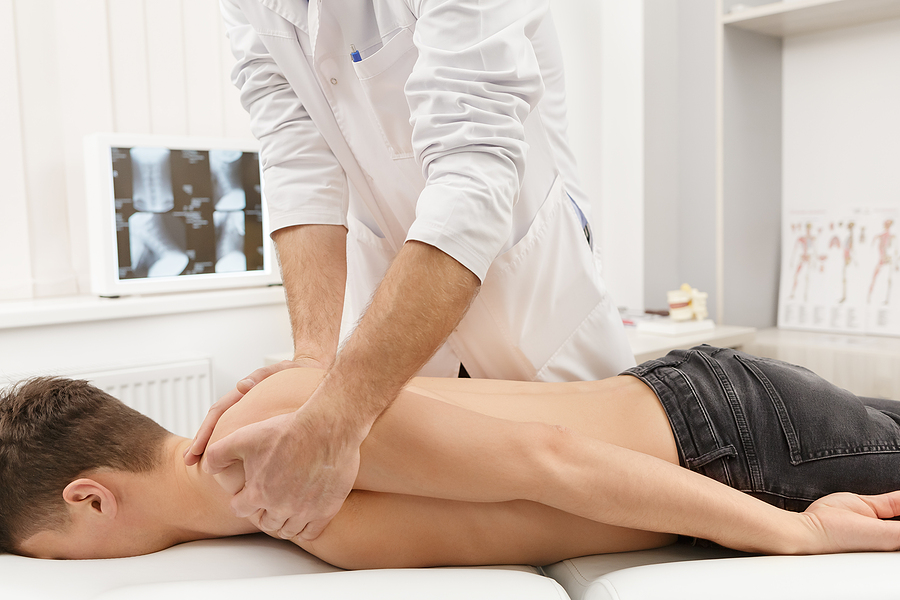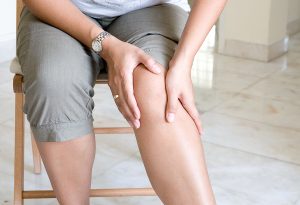Neuromuscular therapy (NMT) is a medical form of massage that focuses on relaxing muscles and tendons that are tight and painful. The goal is to ease pain and improve flexibility and range of motion. It’s especially helpful in recovery from injuries, including sports injuries.
Explore the Benefits of Neuromuscular Therapy After a Sports Injury
John Hopkins reports there are around 3.5 million sports injuries in children below the age of 15. Football, bicycling, and basketball (in that order) are the three most common sports where injuries occur. That’s just children.
The National Safety Council broke down all sports-related injuries from 2022. Exercise equipment caused the largest number of injuries (445,642) among adults between the ages of 25 and older. Bicycling (405,411), basketball (313,924), football (265,747), and ATVs/minibikes (242,347) made up the remaining sports with the most injuries.
With NMT, the recovery following an injury is accelerated. This can be a game-changer for athletes. A long hiatus from practices and games can make it harder to get back into the sport, but pushing your recovery too quickly can lead to re-injury. NMT solves that problem.
Understanding How Neuromuscular Therapy Works
When it comes to injury recovery, NMT helps ease inflammation and improves blood flow. That reduces swelling and pain. It can also help with muscle tightness and ensure muscles work fluidly together. Most experts in NMT know this therapy is best used both prior to a physical therapy workout and after.
NMT is a continuing education program that a massage therapist or physical therapist with at least 500 hours of training can complete through an accredited school. NHI.edu breaks its certification program down into five areas of the body:
- Head and neck
- Shoulder thoracic
- Upper extremities
- Lumbar pelvic
- Lower extremities
The program covers a detailed look at the anatomy of each section, assessing injuries and the pain that results from them, and the neuromuscular structure that can help ease that pain and inflammation. Different massage techniques are used to find trigger points and help with healing. With the NHI advanced NMT program, therapists learn how to assess a client’s needs, how to help them heal, and different therapeutic processes. Hands-on instruction is given before the program ends.
When you go to a sports and orthopedics clinic for help recovering from a sports injury, an assessment is the first step. You’ll talk to a doctor about your injury, what you were doing, what sport you were playing, and how bad the pain and loss of mobility are. You may need a CT scan, X-ray, or other diagnostic images to determine the extent of the injury. The goal is to help you avoid surgery if possible.
Once the injury is properly diagnosed, a treatment plan is drawn up. This often includes a referral to an NMT specialist. That therapist looks over your medical files and images and develops a treatment plan. NMT must cover the appropriate trigger points to ensure the triggers are deactivated so that muscles can improve blood flow and decrease pain and inflammation. That helps speed the healing process.
Trigger points are part of the therapy. Your therapist also works on myofascial release therapy. In this case, massage is used to release the tightness and pain in myofascial tissues, which is the tissue that covers and acts as a support to the underlying muscles.
During an NMT session, the therapist works on your muscle and myofascial tissue to help trigger points turn off while holding the appropriate myofascial support. Your muscle learns a new way to move that improves range of motion and mobility without the pain. You usually go for several hour-long sessions a week apart, but it depends on your injury.
What Are the Best NMT Techniques for Sports Injury Recovery?
After a sports injury, there are several techniques, some often seem similar but the pressure and massage strokes used can differ. They’re often used together to ease inflammation and pain, heighten blood flow, and help get players back with the team as quickly as possible.
- Advanced Deep Tissue Massage: Focuses on treating pain and stiffness by improving blood flow.
- Clinical Sports Massage: Targeted massage for loosening muscle tissue.
- Myofascial Release: Pressure that helps myofascial tissue release its contracted state.
- Neuromuscular Therapy: A therapy designed to ease inflammation and pain in an injured muscle through the use of other therapies. It’s used both before sports to improve flexibility and after a sports injury to heighten recovery.
- Trigger Point Therapy: Pressure and massage strokes that target and turn off trigger points that keep a muscle clenched, stiff, and painful.
Other Therapies That Benefit Athletes
While NMT is a key component in reducing pain and helping with recovery after an injury, it’s not the only therapy to consider.
- Cryotherapy: Your body temperature drops for a short period of time. This accelerates healing and reduces inflammation, which can be a major component in pain after an injury.
- EMS Training: Workout with electrodes that send a small charge of energy directly into the muscle. This causes a muscle contraction that stimulates the muscle fibers. Muscles strengthen quickly in a targeted manner.
- IV Drip Therapy: An IV of fluids that contain essential nutrients can help cells and tissue recover. It’s also a good way to strengthen your immune system and recover from an injury.
- Physical Therapy: Physical therapists are specialists in how the body moves and how the muscles, tendons, bones, and ligaments all work together. Once a physical therapist creates a treatment plan, you work on it under the therapist’s care. Massage, stretches, and assistive devices are all used in physical therapy.
- PRP Injections: PRP stands for platelet-rich plasma. Your blood is drawn, processed to separate the platelets, and injected into the injured area to help accelerate the healing process. PRP treatments have been found to be four times more effective than steroids.
- Stem Cell Therapy: Stem cell therapy also starts with a blood draw. Your blood is drawn and processed to remove healthy stem cells. They’re injected into the damaged tissue to boost healing and tissue regeneration. It’s most effective for damage to cartilage, ligaments, and tendons.
Don’t put off an expert’s care. If you’re injured, schedule an appointment with Premium Sports & Orthopedics for a holistic treatment plan that includes NMT for both recovery from your sports injury and preventative measures to keep an injury from reoccurring. With the optimal treatment plan, athletic performance improves and pain decreases. Contact us today!







